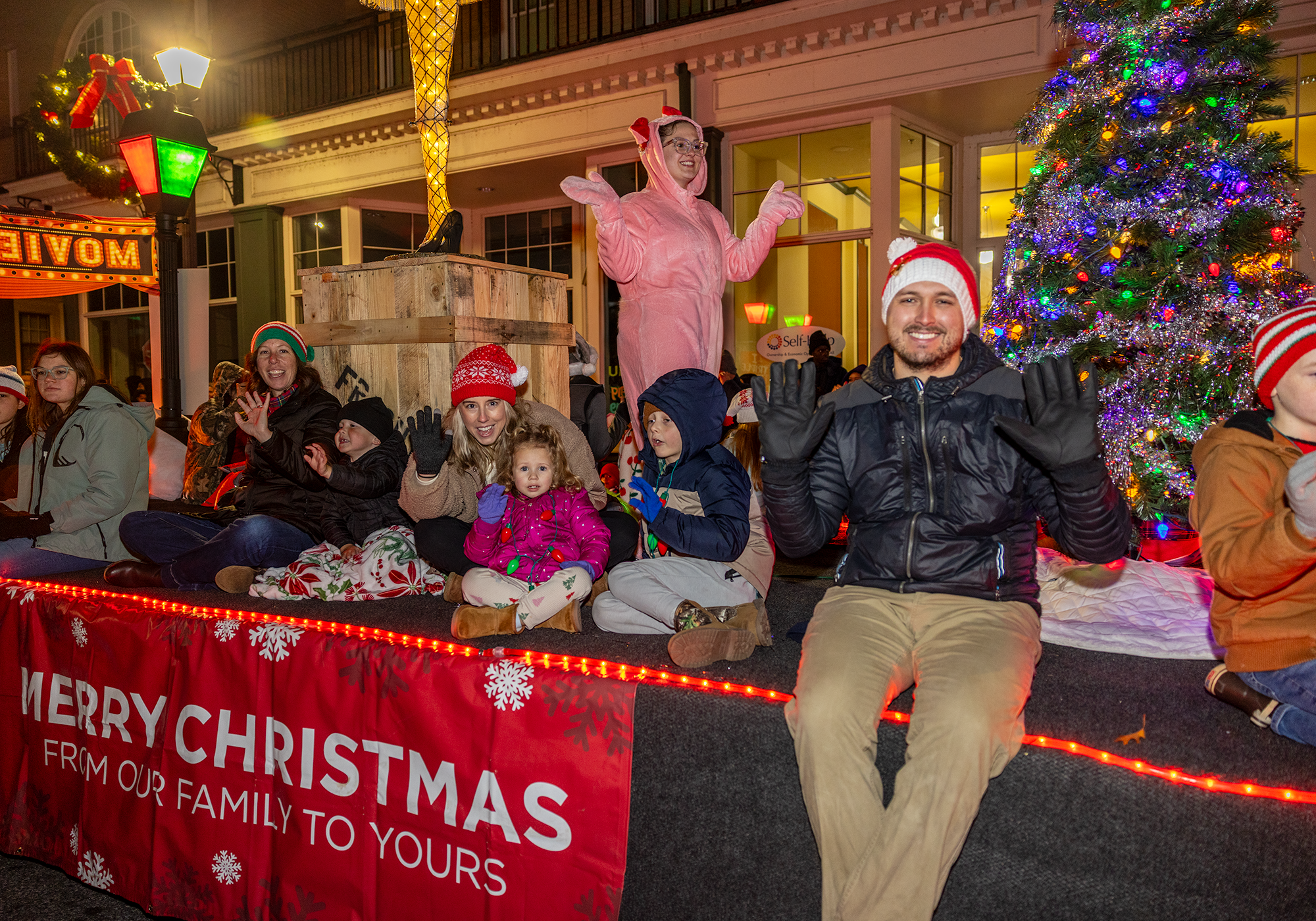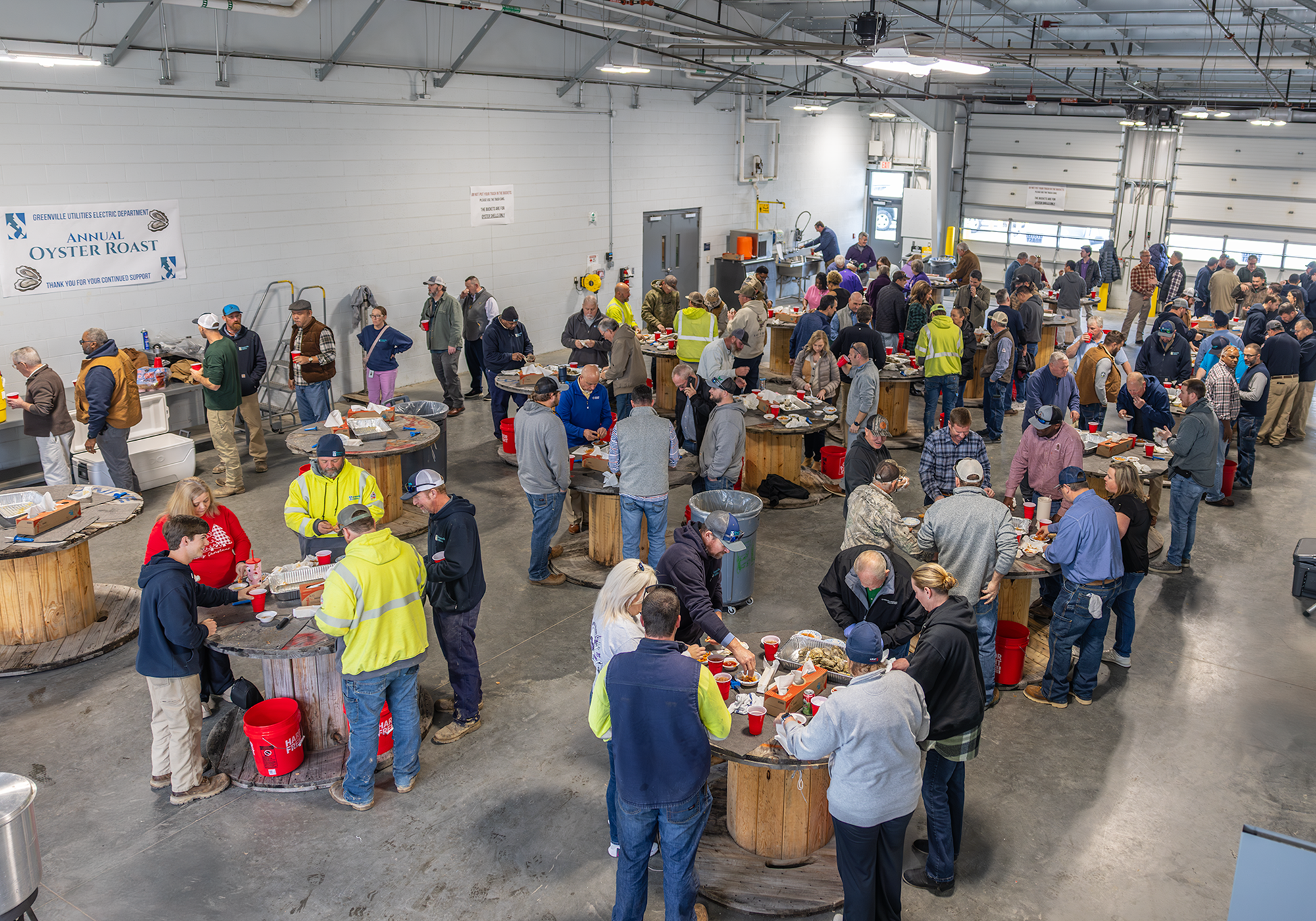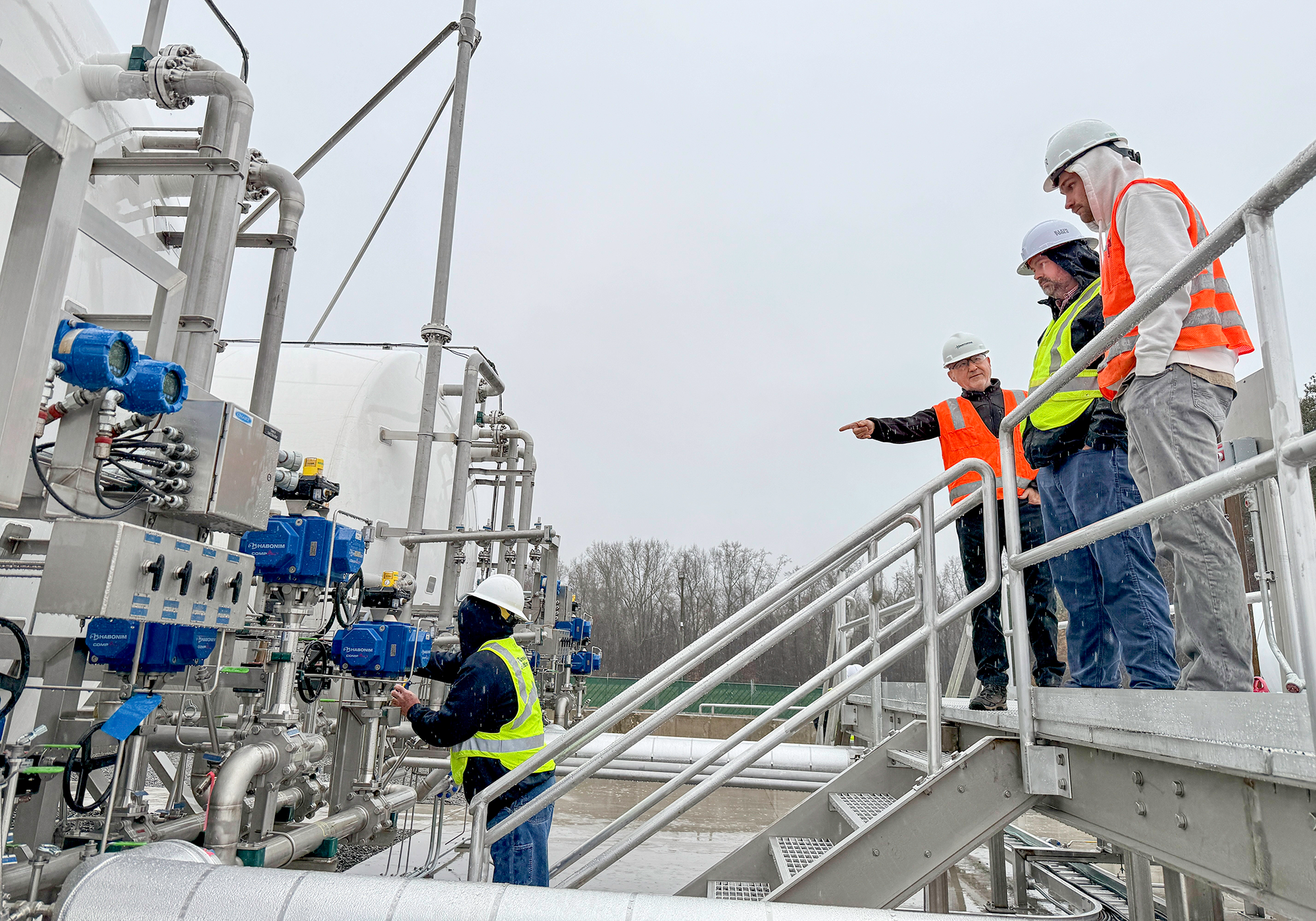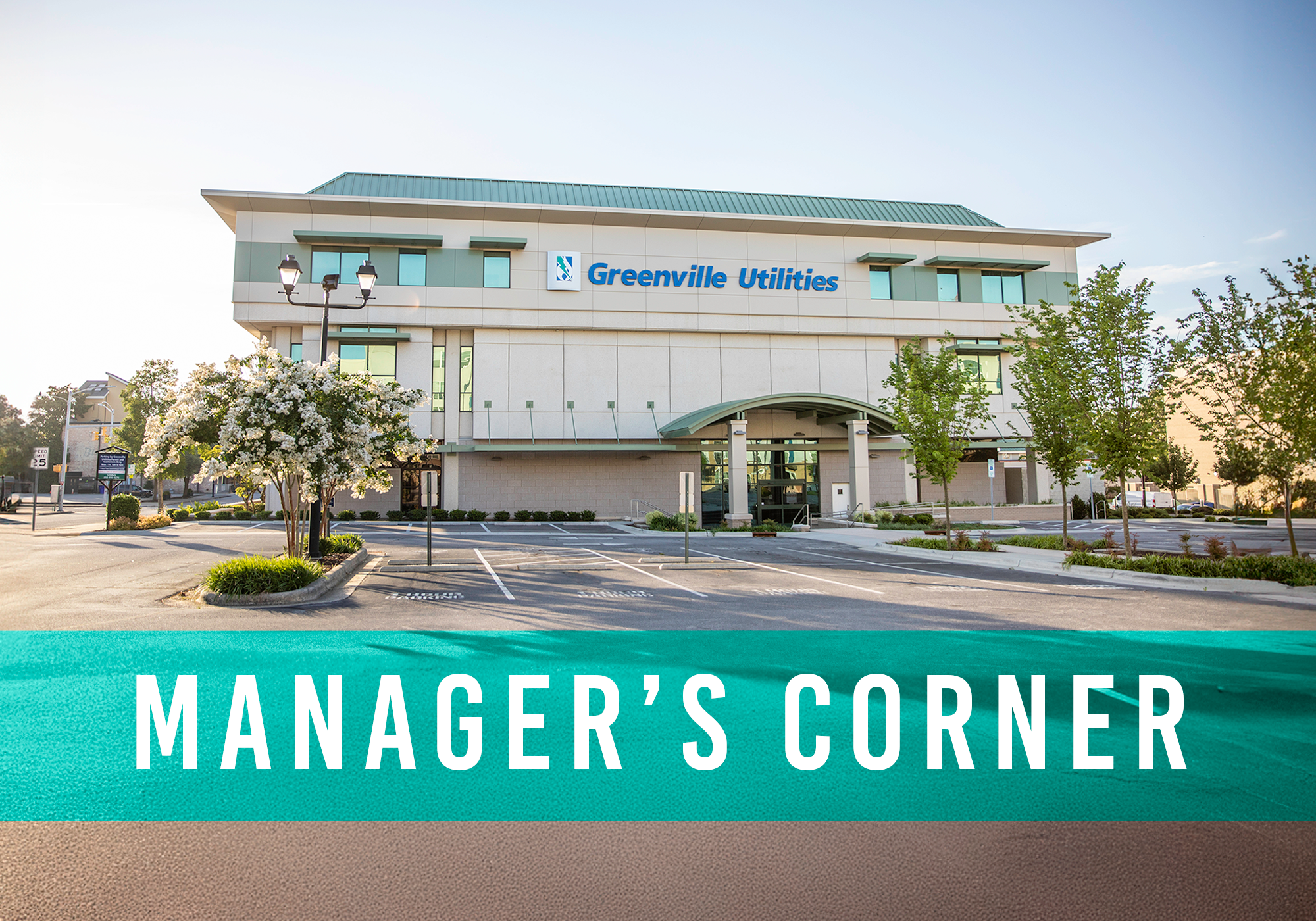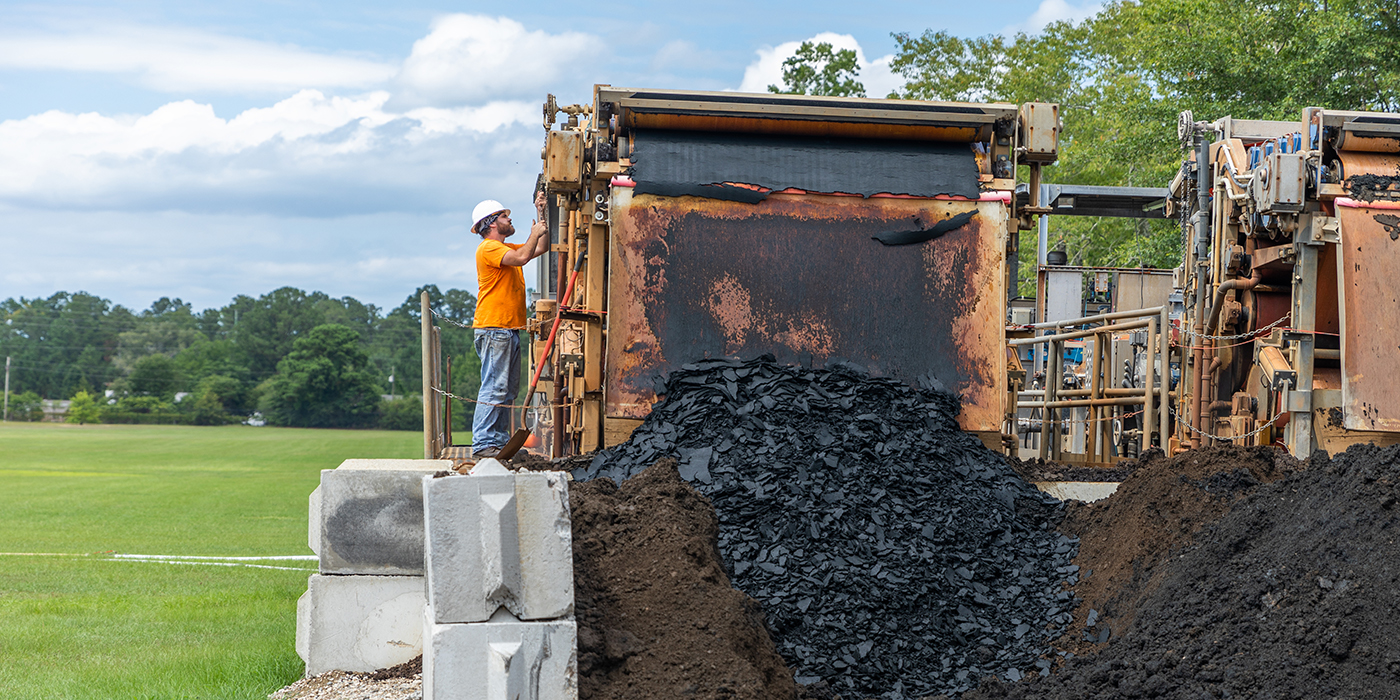
The 23-acre residuals lagoon at our Water Treatment Plant is undergoing its first ever cleanout. This process takes approximately four months and involves multiple steps and a variety of equipment.
Residuals Lagoon
Turning river water into drinking water requires many steps and, along the way, the process creates some waste known as water treatment residuals (WTR). Water treatment plants have multiple ways of managing their WTR. At our Plant, the WTR is sent to a 23-acre lagoon where the heavy solids can settle to the bottom, and the water is pumped back to the Tar River. This process meets the water quality requirements of our Plant’s Clean Water Act National Pollutants Discharge Elimination System Permit.
Over time, a by-product called alum sludge builds up at the bottom of our residuals lagoon. The Water Treatment Plant contracted with Bio-nomic Services to hydraulically dredge the alum sludge from the lagoon. The sludge from the dredge is then sent to a mixing tank to create a slurry mixture, called, you guessed it, “slurry.”
Next, the slurry is sent to a belt press for dewatering, converting it into a dry cake material. The dewatered material is placed into a dump truck and hauled to one of two land application sites (one at the Water Treatment Plant and one at our Wastewater Treatment Plant). Bio-nomic Services obtained a permit to spread approximately 1,500 tons of dewatered material at both sites.
“The ability to land apply this large volume of sludge versus transporting it to the closest regional landfill (in Bertie County) saves GUC over $200,000 in transportation and landfill fees,” said WTP Superintendent Julius Patrick. “Subsequent cleanings will not take as long as this first cleaning, so our long-term plan is to annually dredge the lagoon.”



